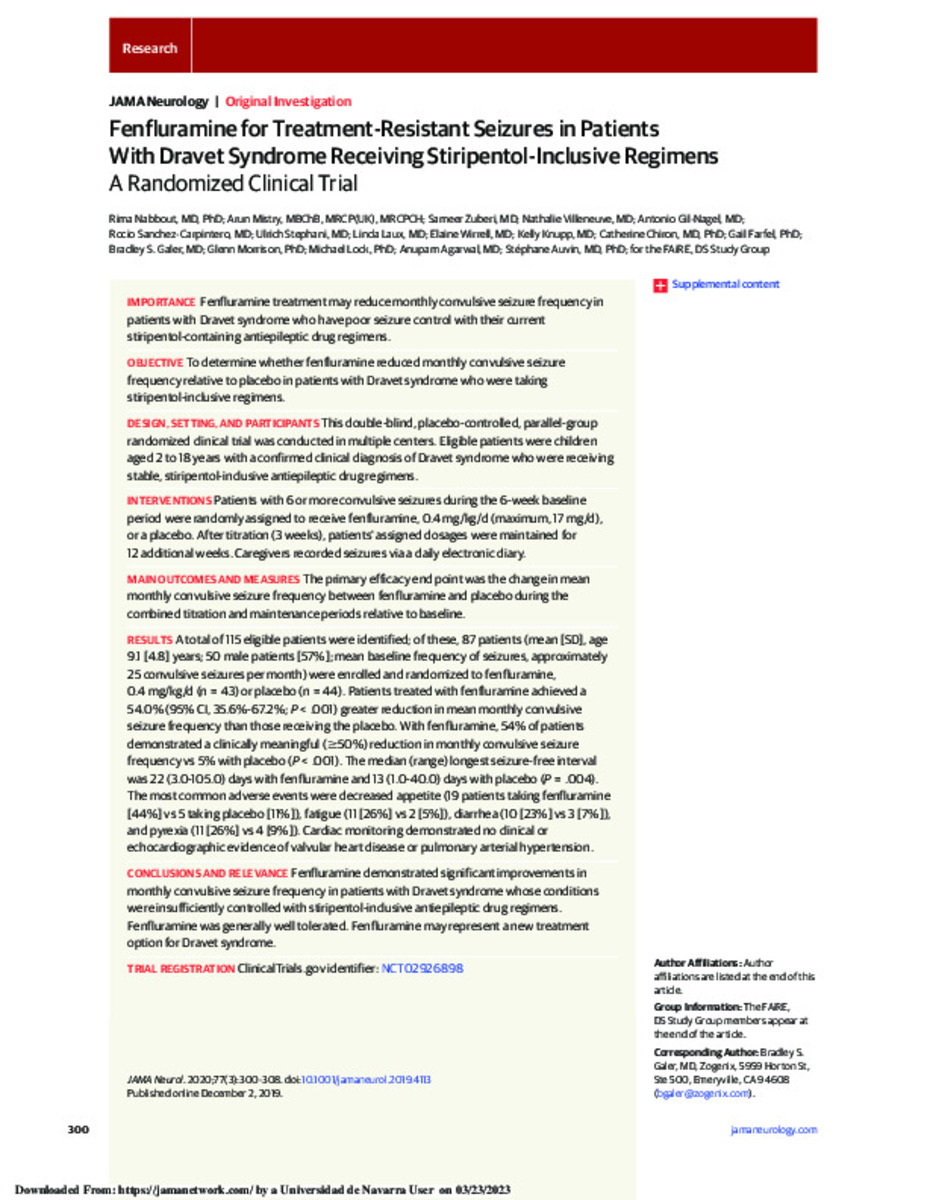Fenfluramine for Treatment-Resistant Seizures in Patients With Dravet Syndrome Receiving Stiripentol-Inclusive Regimens A Randomized Clinical Trial
Note:
This is an open access article
distributed under the terms of the CC-BY-NC-ND
License.
Citation:
Nabbout, R. (Rima); Mistry, A. (Arun); Zuberi, S. (Sameer); et al. "Fenfluramine for Treatment-Resistant Seizures in Patients With Dravet Syndrome Receiving Stiripentol-Inclusive Regimens A Randomized Clinical Trial". JAMA Neurology. 77 (3), 2020, 300 - 308
Statistics and impact
0 citas en

Items in Dadun are protected by copyright, with all rights reserved, unless otherwise indicated.







